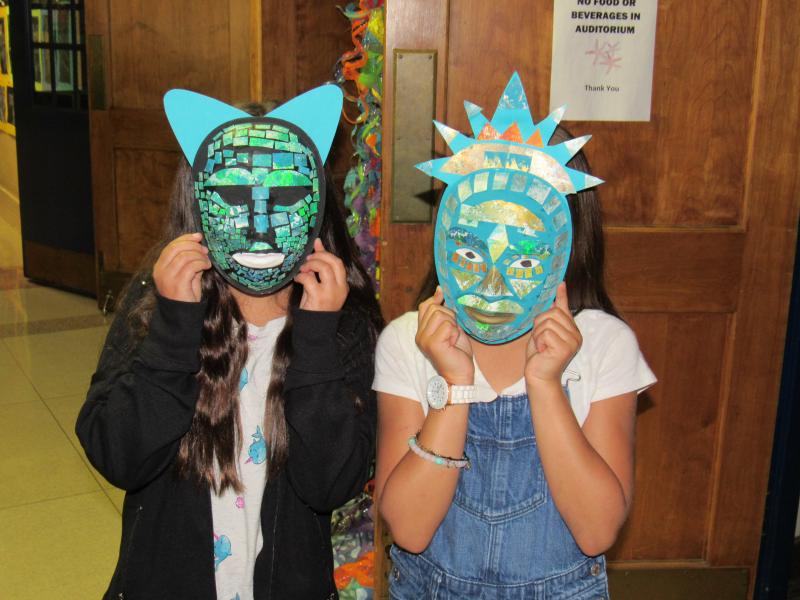Rehoboth Elementary art students wrapped up a yearlong study of Mexican culture by displaying their multimedia projects in a school art show.
Art teacher Kellyann Ranieri said a student’s family traveled to Mexico over spring break. A Cape Henlopen Education Foundation grant provided funds for the family to purchase Mexican artifacts during the trip to use as subjects in the art room. The CHEF grant also paid to frame students’ artwork.
Focusing on photography, fifth-grade students learned about zoom, perspective and grouping items into patterns of threes. Using their school iPads as cameras, students experimented with lighting and different subjects and chose their top three shots to edit for the show.
“They learned that taking photos of simple objects like green bottles, chiles or peppers can be very artistic,” Ranieri said.
Fourth-graders created Aztec death masks by gluing colored paper strips to mask frames to resemble and simulate the texture of stone or tile. Students left the mask eyes uncut because the masks were worn by Aztec nobles after death. Students also learned about Aztec calendar sunstones and the Day of the Dead, a Mexican holiday that honors deceased friends and family.
In third grade, students used brown paper and paint to make traditional matte bark folk art with floral patterns and fanciful animals. Second-graders created papier mache sombreros and art to reflect the excitement of the traditional Mexican market.
First-graders studied Mexican artist Frida Kahlo and created mixed-media tropical birds and folk art cats. Kindergarteners learned about Mexican fiestas.
Classes created monarch butterfly tiles after learning how butterflies migrate to Mexico for warm temperatures during our winter and then return. They also created alibrijes, bright Mexican folk art animal sculptures.
“We took toy animals, plastered them and designed them with dots and designs to make them whimsical,” Ranieri said.
And, finally, students learned how art can transform culture. In the hillside poor neighborhood of Las Palmitas, Mexico, a government-sponsored project brought locals together to paint more than 200 homes in a mural design. Crime rates in the now-beautiful town have decreased and artists are working together to paint other towns to enhance their public images through art.
More than 100 of the students’ works were displayed in the Dewey Arts & Fun Fest in May.



















































